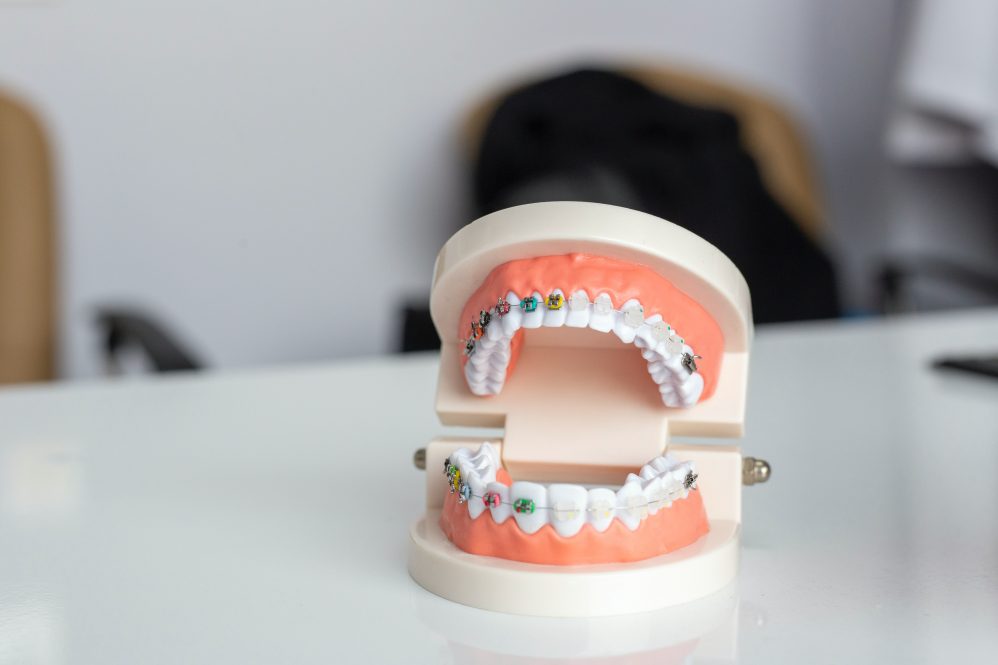Dr. Madhur Upadhyay and his collaborators have invented an artificial intelligence tool to assist clinicians in determining next steps for patients’ orthodontic care.
“If you get two orthodontists in a room, they will disagree on 50% of the patients they are diagnosing, to varying degrees,” says Upadhyay, an associate professor of orthodontics at UConn’s School of Dental Medicine. “Everybody’s reading the same literature, but they are perhaps interpreting it in different ways. Artificial intelligence can do this job very nicely – assimilating the literature and then interpreting it in ways that are perhaps more accurate than how most of us will interpret it.”
The algorithm, further optimized by assistant professor at Marquette University School of Dental Medicine Dr. Shivam Mehta and data scientist and AI developer Gaurav Sinha, draws on a deep network of medical literature and expert decisions to indicate whether it agrees or disagrees with an orthodontist’s analysis. Positive results, where the algorithm is in agreement with the doctor’s diagnosis, provide more peace of mind to clinicians and patients. Negative results prompt the clinicians to take another look and determine the source of the discrepancy between the algorithm’s projected diagnosis and their own.
While any former braces-wearer can attest that the process of shifting teeth can be unpleasant, the diagnostic acumen required from orthodontists may be less obvious from the patient’s chair. But determining the best placement for a patient’s teeth — and the best course of action to guide them there — is a precise science, one that Upadhyay is excited to augment with the capabilities of AI.
Inaccurate diagnoses can result in jaw pain, bone loss, gum recession, and other dental issues that are difficult to correlate with past orthodontia when they develop years down the line. Including the “second voice” of AI, he says, will ensure better patient outcomes in the long term.
A successful orthodontic diagnosis considers “aesthetics, function, and structure,” says Upadhyay, who is a practicing clinician in addition to teaching at UConn. All these domains are interconnected, he notes, so an inaccurate diagnosis can be catastrophic: “Suppose you took teeth out in a patient that did not need teeth to be taken out. Or suppose a patient required taking teeth out but you did not take teeth out. That can compromise the structural integrity of the teeth, the bone, and the surrounding structures.”
In addition to improving patient outcomes, Upadhyay’s algorithm will free up valuable time for providers, allowing them to diagnose more patients without compromising accuracy. “We understood that time is the key if you want to make it into a business model,” Upadhyay says about the commercialization process.
As the idea for the algorithm was being developed, Upadhyay reached out to UConn’s Technology Commercialization Services (TCS) for patentability and commercialization. TCS worked with Upadhyay to protect the intellectual property associated with the technology and introduced him to various entrepreneurship support services, like Accelerate UConn. The technology maturation was further supported by UConn’s TCS through a Proof-of-Concept START grant.
Eventually, he says, his team has an eye toward developing AI algorithms to assist with all steps of the diagnosis process, from taking measurements to interpreting data.
“A significant amount of human power is wasted in doing mundane jobs like cropping figures, resizing figures, drawing some lines on them to interpret them — which are pretty basic things,” he says. “A system should be automatically able to do it.”



